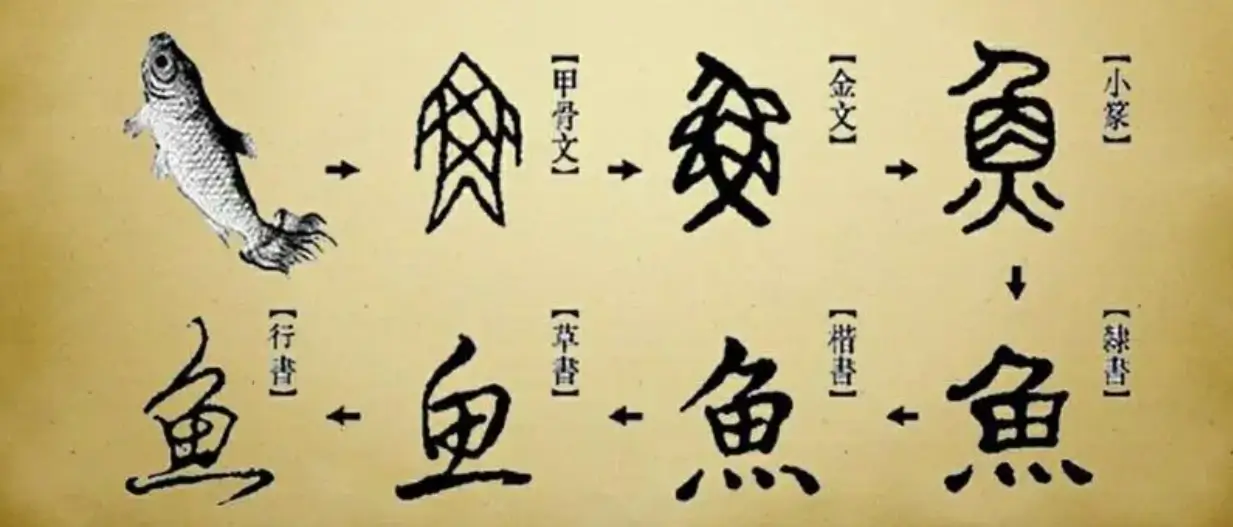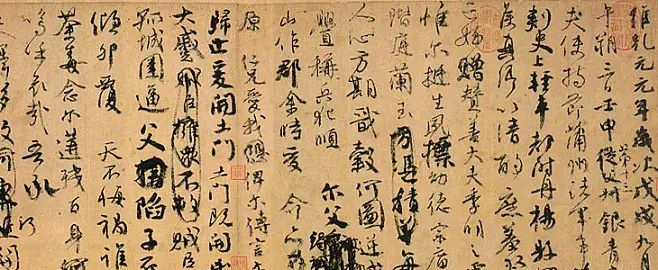Chinese characters are an important part of international Chinese language teaching, and for international Chinese language students, how to learn Chinese characters well is a major challenge. One of the methods for telling a good story of Chinese characters is the “character source analysis method“. To analyze the source of characters, it is necessary to connect with the “Six Books” theory of traditional philology.
Chinese Characters Are “Drawn”
When it comes to the method of creating Chinese characters, it cannot be separated from the “Four Books” in the “Six Books“, which include pictographs, symbols, meanings, and phonograms.
The creation of Chinese characters using both pictographic and referential methods often involves depicting the image of objects, which can easily create the impression that Chinese characters are “drawn” for international students studying in China. In the process of introducing pictographs to international students, such as introducing the character “sun (日)“, the shape of the sun can be depicted; When introducing the word “moon (月)“, because the moon is not circular for most of the time, there is a saying that “the moon has its ups and downs(月有阴晴圆缺)“. The ancient people chose to use the curved crescent shape to express “deficiency” here.
Introducing pictographic character formation to international students studying in China can not only help them understand the characteristics of Chinese characters, but also increase the fun of learning Chinese characters through tracing their origins.
Symbol characters are symbols added to pictographs to represent the characteristics of things. For example, drawing a horizontal line as a reference and drawing a short horizontal line above it to indicate “up (上)“; Draw a short line below the horizontal line to indicate “down (下)”. Similarly, draw a horizontal line above the pictographic character “wood (木)” representing trees to indicate “tree top“, which is the “end (末)” of the tree; Draw a short horizontal line below “wood (木)” to indicate “tree root”, which is the fundamental “root (本)”.
Chinese Characters Are “Combined” Together
The Chinese characters created using both pictographic and referential methods are individual characters, while the characters created using the two methods of meanings and phonograms are composite characters.
For example, the word ‘pick (采)‘ in picking, with the upper part representing the hand and the lower part representing the tree and its fruit. Taken together, the word ‘picking‘ refers to picking by hand on a tree. Its original meaning is to gently pick with your fingers or fingertips, and later extended to mean collecting, adopting, and so on.
Similarly, the pictographs “human (人)” and “wood (木)” signify “rest (休)“, indicating that a person rests on a tree; The movements of “hand (手)” and “eye (目)“, knowingly placing the hand over the eyes to “see (看)“; “Knife (刀)” and “clothing (衣)” can mean the basic “beginning (初)“, indicating that the “initial” step in clothing making is to use a knife to cut fabric, allowing students to experience the meaning of modern Chinese as a newcomer or newcomer.
The “pictophonetic” method of creating characters is a method of combining the pictophonetic elements representing meaning with the phonetic elements representing sound. In the teaching of Chinese characters, various structural types of pictophonetic characters retained in modern Chinese characters can be explained through tracing their origins, such as “wealth (财)”, “leadership (领)”, “bamboo pole (竿)”, “marriage (娶)”, etc.
At the same time, modern technology uses characters and some transliterated characters, often using the form sound method to create characters. Typical examples include the transliterated words “coffee (咖啡)” such as “co (咖)” and “ffee (啡)“, as well as the pictophonetic characters in the periodic table of chemical elements such as “recognizing characters by recognizing the halves of them“.
Interpreting the Story of Chinese Character Creation
Chinese characters are both drawn and combined. How to follow the teaching of Chinese characters for international students in China based on their understanding of Chinese character formation, around the theme words “painting” and “combination” according to the situation?
Firstly, pictographs and symbols do have elements of description and “drawing“, but due to the evolution of Chinese character forms, the circular lines have become square and straight strokes. Therefore, cultivating the “stroke perspective” of international students is an important part of Chinese character writing.
This stage not only includes the direction and position of the strokes, but also involves the addition, subtraction, and combination of the strokes. For example, “mouth (口)” cannot be painted as “0“, “bamboo head (竹字头)” is not “KK“, and the horizontal strokes of “soldier (士)” and “earth (土)” are different in length… Interpreting the meaning of horizontal and vertical strokes can help international students transition from the confusion and helplessness of “drawing” Chinese characters to gradually developing a good habit of “writing” Chinese characters.
Secondly, the combination of meaning and form sound is a combination of multiple character components, but this combination strictly follows the rules of block character structure. According to the layout principle of “top”, “bottom”, “left” side “,” right “side”, “inner” heart “,” outer “box”, and “waist”, the beauty of the form of square Chinese characters is reflected.
To cultivate the awareness of “component” word formation among international students, it is not only necessary to pay attention to the teaching of component names and positions, but also to highlight the teaching of comparison between similar components. Emphasize that “stay (呆)” and “apricot (杏)” are two words; Looking at the “part (部)” of the component in a mirror, it becomes a “companion (陪)” accompanied by another word… It makes international students fall in love with Chinese characters and fall in love with Chinese characters in the character composition game of each component.
Explaining the structure of Chinese characters and telling Chinese character stories to international students in China not only shares the magical beauty of Chinese characters, but also allows students to experience the cultural charm of Chinese characters.










